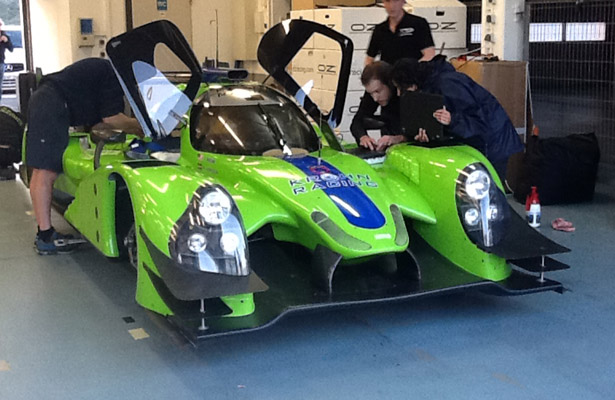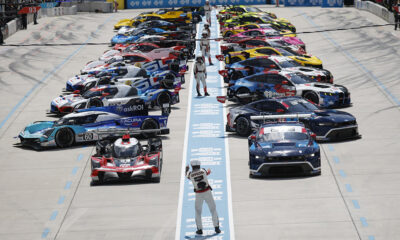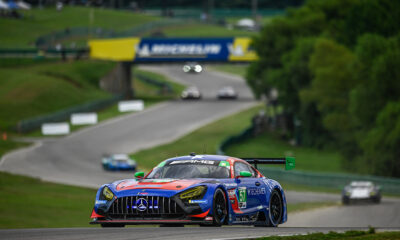
Photo: Nic Jonsson
A milestone in Krohn Racing’s new LMP2 program was reached last week when its Ligier JS P2 Judd completed a successful shakedown in Estoril ahead of its U.S. race debut in January’s Rolex 24 at Daytona.
Tracy Krohn and Nic Jonsson were on hand for the three-day test in Portugal, which saw the first-ever laps for the Onroak Automotive-designed prototype, which will compete on both sides of the Atlantic next year.
It came after more than three weeks of work in the final assembly of the car, assisted by a small contingent of Krohn personnel, who had flown to Onroak’s Le Mans workshop and were also on hand for the car’s rollout.
“They all did a phenomenal job putting the car together,” Jonsson told Sportscar365. “We didn’t have any issues whatsoever, from the first rollout through the three-day test.
“The only issue we had was the weather. It was pretty wet the whole time. We had a few runs in dry conditions, so we got a feel for that as well.
“But it was mainly a shakedown, system checks. We got to do all of the wet running system checks too, with the windshield wipers, and heaters and brakes and understand what that needs to be when you go race in wet conditions.
“While we had wished to have had more of a dry first run in the car, I think it still worked out really, really well as we got a lot of things accomplished. I was very, very pleased with the first outing with the car.”
Ho-Pin Tung turned the initial laps in the first-ever Judd-powered Ligier before handing it over to Krohn and Jonsson for the remainder of the three-day test.
Despite the less-than-ideal conditions, Jonsson said they came away pleased with the car, with the Houston-based crew also quickly acclimating itself to the LMP2 machine following more than five seasons of running Ferrari 458 GT cars.
“We both felt very, very good about the car shakedown and everything we accomplished,” Jonsson said. “Talking with the crew, they say the car is very easy to work on compared to a GT car. A GT car is obviously a production-based car and it’s more difficult to get into stuff.
“When you try to do a change in pit lane, you have to get the car up on stands and get underneath. Here, to do shock changes, spring changes, bar changes and ride height and things like that, you take the nose cover off and you have much more easy access to it.
“This car is obviously much more technically advanced and much more sensitive when it comes to those adjustments because of the downforce of the car. But as far as accessibility, it’s very nice and easy to work on.”
An intensive pre-season testing program is now planned in the U.S., starting with a test at Circuit of The Americas on Dec. 4-5, which will mark the car’s first opportunity to run on Continental tires.
“We can’t wait to get the car back to the States and start to do some proper testing to get an understanding for all of the different things,” Jonsson said.
“We were obviously running Judd package, so we’re looking into getting great engine data, as well as aero data from some U.S. tracks with Continental tires.
“They will be a little different than running Dunlops or Michelins, as we understand it. So we’re looking forward to that opportunity to start to learn about the car.
“OAK has been very, very helpful and we are going to have some technical support from them in testing before the first race next year.”
While the team has announced its participation in the TUDOR United SportsCar Championship season-opening Rolex 24 at Daytona and Twelve Hours of Sebring, as well as a return trip to the 24 Hours of Le Mans, the rest of its 2015 program has yet to be confirmed.
However, it will likely include either a full-season program in the European Le Mans Series, FIA World Endurance Championship or potentially a mix of both series, as well as additional TUDOR Championship rounds.
Jonsson said he expects an announcement to be made before the end of the year, once Krohn finalizes his work commitments.
Additional drivers for the two season-opening races would also likely be confirmed next month.



























